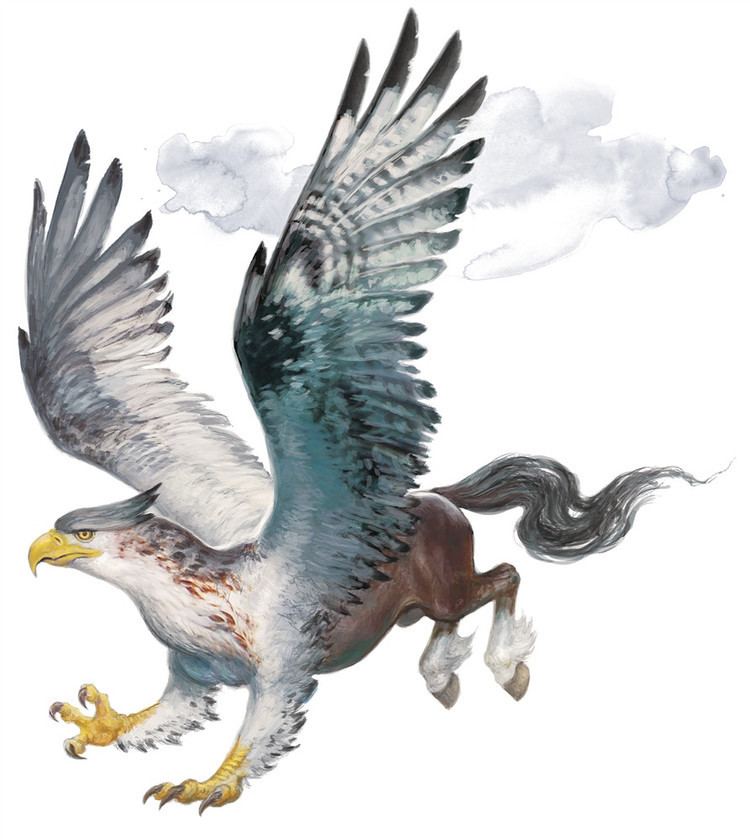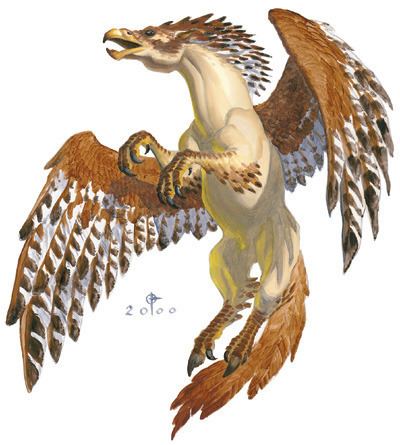First Mentioned 44-38 BC | Mythological Origin France Introduced by Virgil | |
 | ||
Abilities Flies, Builds nest, Lays eggs | ||
How to draw buckbeak hippogriff doodle in harry potter
The hippogriff, or sometimes hippogryph is a legendary creature which has the front half of an eagle and the hind half of a horse.
Contents
- How to draw buckbeak hippogriff doodle in harry potter
- Beliefs and symbolism
- Modern representations
- References
The first recorded mention of the hippogriff was made by the Latin poet Virgil in his Eclogues. Though sometimes depicted during the Classical Era and during the rule of the Merovingians, it was used by Ludovico Ariosto in his Orlando Furioso, at the beginning of the 16th century. Within the poem, the hippogriff is a steed born of a mare and a griffin—it is extremely fast and is presented as being able to fly around the world and to the Moon. It is ridden by magicians and the wandering knight Ruggiero, who, from the creature’s back, frees the beautiful Angelica.

Sometimes depicted on heraldic coats of arms, the hippogriff became a subject of visual art in the 19th century, when it was often drawn by Gustave Doré.
The word Hippogriff, also spelled Hippogryph and Hippogryphe is derived from the Ancient Greek ἵππος /híppos, meaning “horse,” and the Italian grifo meaning “griffin” (from Latin gryp or gryphus), which denotes another mythical creature, with the head of an eagle and body of a lion, that is purported to be the father of the hippogriff. The word hippogriff was adopted into English shortly before 1615.
Beliefs and symbolism
According to Vidal, a Catalan historian, this creature was supposed to live near Céret, in the County of Roussillon of modern-day France, during the Middle Ages. Claw marks were found on a rock near Mas Carol. The belief in the existence of the hippogriff, such as Ariosto describes, is fiercely attacked in a scientific essay on religion in 1862, which argues that such an animal can neither be a divine creation, nor truly exist. The hippogriff is supposed to be a mixture of several animals and the author notes that in order to support its weight, the wings would be so heavy that flight would be impossible, which proves—without question—that it does not exist.
In some traditions, the hippogriff is said to be the symbol of love, as its parents, the mare and griffin, are natural enemies. In other traditions, the hippogriff represents Christ's dual nature as both human and divine.
Modern representations
Artist Max Klinger used the hippogriff amongst other objects in his drawing Fantasy and the Artist to note his disparagement for artistic work that relies on out-worn and cliched symbolism.
In a hoax initially perpetrated in 1904 in Lake George, New York State, tricksters used a fake “monster” which became known as "The Hippogriff". The creation had a head of a bird of prey, teeth, and two large horse ears, which could be controlled from below. The pranks and sightings faded until 1999 when several people staying at the Island Harbour House Hotel stated they had seen a sea monster at night. The old hoax was uncovered by the Daily News and the Lake George Historical Association Museum, which created a copy of the original wooden monster to display to the public in August 2002.
The hippogriff appears in various works of fantasy, such as works of E. Nesbit and E. R. Eddison's The Worm Ouroboros (1922).
The fantasy role-playing game Dungeons & Dragons includes a version of the creature, which is described as having a horse's "ears, neck, mane, torso, and hind legs" and an eagle's "wings, forelegs, and face". According to the game's rules, the creatures are closely related to griffins and pegasi.
A hippogriff named Buckbeak features prominently in Harry Potter. Peter Dendle says that the portrayal of the treatment of Buckbeak in the novels is one example that demonstrates "[t]he emotional need to express domination symbolically" as well as being one of the episodes that allows Harry to be shown as the "perennial liberator of all manner of creatures." Al Roker calls the creation of Buckbeak in the film Harry Potter and the Prisoner of Azkaban "one of the most magnificent and realistic creatures in film history." The character was used to create the theme for a roller coaster called Flight of the Hippogriff at the Florida amusement park The Wizarding World of Harry Potter in which the cars are wicker covered and pass by a statue of a hippogriff in a nest.
